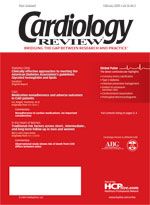Medication adherence and meaningful clinical markers in diabetes mellitus
Diabetes mellitus is a chronic disease for which nonadherence to therapy is frequent.
Diabetes mellitus is a chronic disease for which nonadherence to therapy is frequent. A patient will oftentimes not “feel bad,” thus he or she may not understand the necessity of taking medication. In addition, the average person with type 2 diabetes takes a significant number of medications each day—3 to 4 glucose lowering agents, 3 to 4 antihypertensives, a statin, and aspirin—for a total of 8 to 10 medications and, often, up to 15 to 20 tablets per day.
Recent studies have discussed strategies to improve compliance and adherence; most include a team approach involving diabetes nurse case management and culturally oriented patient training programs.1 Another strategy that has been shown to be successful is the provision of personalized blister packs and/or pill boxes.2,3 However, all of these approaches require patient-centered education in which the patient must choose to participate.
Another, perhaps surprising barrier to compliance and adherence involves the use of electronic medical records, whereby someone on the clinic staff merely reviews the medication list with the patient. Just what a patient is actually taking can only be discerned by having the patient bring their pill bottles to the clinic and reviewing the contents of each bottle (and the dates on the labels). While time consuming, this can be done by any team member and can uncover discrepancies that the patient may not have volunteered. Patients often do not tell their doctor about noncompliance/nonadherence issues because they “like” their doctor and do not want to make him or her angry at them.
The data presented by Ho and colleagues suggest that focusing on nonadherent patients will have the greatest impact on decreasing morbidity and mortality. In this case, that represents 21% of the population with diabetes. In and of itself, baseline hemoglobin A1c (A1c) does not predict nonadherence; reviewing requests for refills, attendance in clinic, and pharmacy records may help identify these patients.
The typical assumption has been that providing medical care (ie, through health insurance) and patients’ having the money for copayments solves all problems. However, even the NHANES 1999-2002 data refutes that notion, as the authors of this study found that neither having health insurance nor a household income above $55,000/year predicted that a person would be at goal on standard targets of therapy.4 There are clearly patient factors involved that we do not understand. Perhaps further study and interviews with the nonadherent cohort could help us identify what systematic changes can be made to capture this part of the population.
Although A1c and low-density lipoprotein (LDL) levels were lowest in the most compliant quartile of this population, the difference between each quartile was not great, suggesting that either of these targets alone is not sufficient to identify the noncompliant/nonadherent patients. This raises very important questions regarding “pay for performance” proposals for physicians whose patients maintain A1c below 7%. These data suggest that such a strategy would not capture the appropriate population and would not prevent the hospitalizations and mortality.
The fact that noncompliance has a more dramatic effect on hospitalizations and mortality than on biochemical targets of therapy suggests that there are other, nonmeasured factors that are not captured by A1c or LDL. Are these patients with worse disease? Are they patients who do not take care of themselves because they do not yet believe they have a medical problem? Is it possible that education and frequent contact (ie, case managers) could help identify barriers to therapy? These questions need to be explored as we try to identify these patients before they are hospitalized for the complications related to diabetes.
